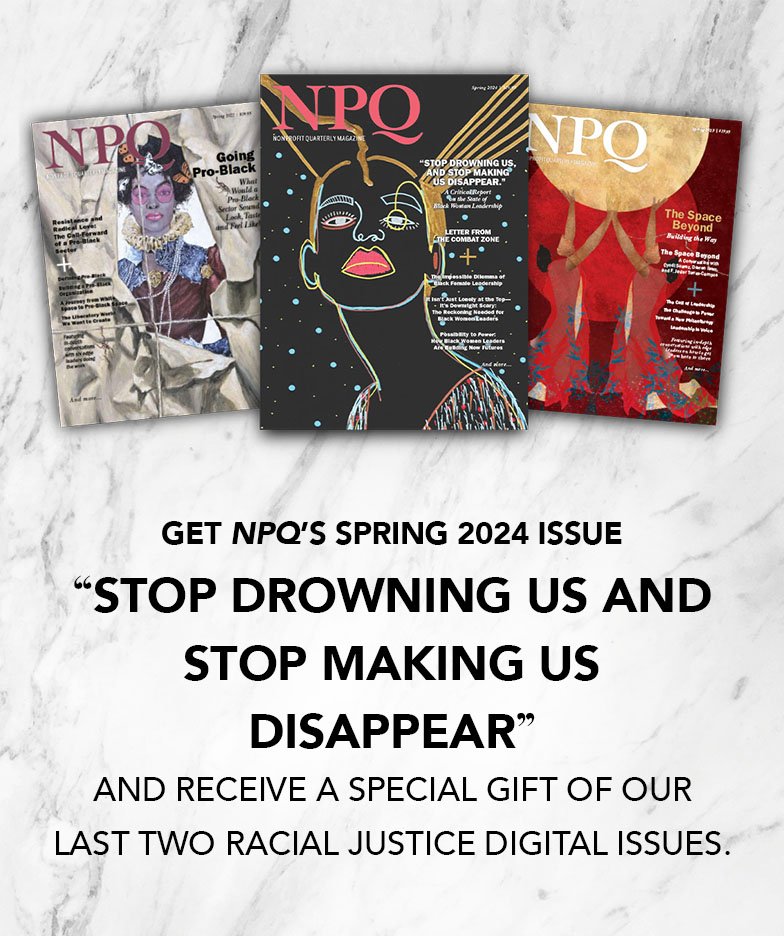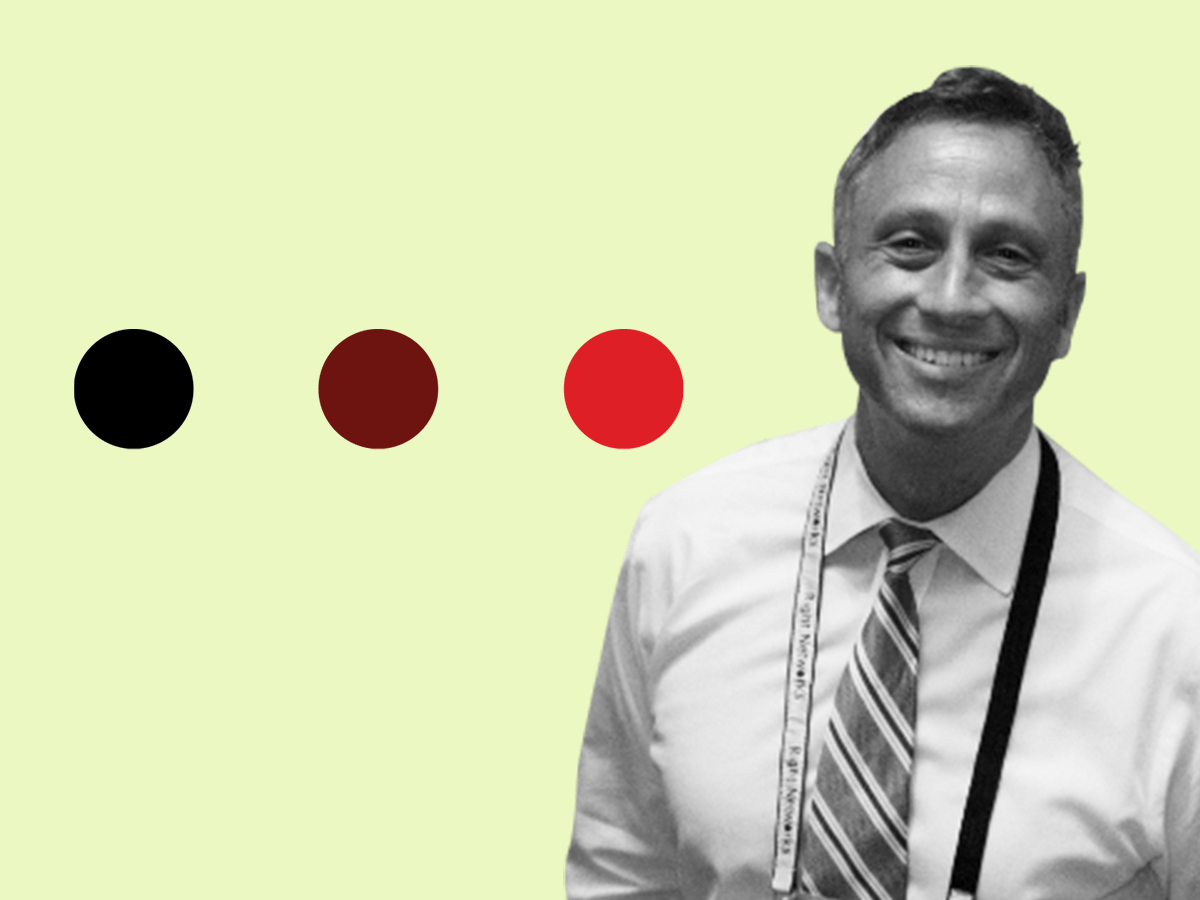
Editors’ note: This article is from NPQ’s fall 2015 edition, “Making Things Work: Considerations in Nonprofit Strategy.” To read the full issue click here to subscribe.
For most of human history, it was assumed that development in adults was, essentially, the accumulation of knowledge. Scholars believed that what an adult thought could change over time, but how an adult thought plateaued shortly after adolescence. Research conducted during the last seventy years, however, has demonstrated that most adults continue to experience shifts in cognitive complexity throughout their lifetime.1 Psychologists describe these shifts as stages, and the stages operate outside conscious awareness and in a paradigm-like fashion.2 As it turns out, these stages shape our thoughts, attitudes, and behaviors in subtle yet powerful ways.
In this article, I explore the implications of developmental theory for the nonprofit sector. First, I offer a vignette describing three different donors. Then, I describe how these donors represent three different ways of thinking that are similar to the stages described by developmental theorists. I also briefly explore the muddy process of transition between stages. Finally, I present three important implications of this developmental logic for the nonprofit sector, and suggest a new way of thinking about nonprofit work.
Three Donors, Three Ways of Thinking
Imagine that you are the executive director of an after-school program, and you are in the middle of a major capital campaign for a new youth center. The new building will be located in a highly distressed neighborhood and will allow you to provide services to an additional two hundred youth each year. You predict that the programs offered at this new site will decrease gang activity, neighborhood violence, and teenage pregnancy, and, conversely, increase high school graduation rates and overall resiliency in the youth who participate.
It is Monday morning, and you have three meetings with major donors to explain the project and ask for their support. In the first meeting, Donor A, Alice, says to you, “This is exciting! It sounds like you know what you are doing. How can I help?” You leave this meeting feeling energized and ready to continue your campaign. In the second meeting, Donor B, Bob, says, “I like that you have an ambitious goal, but over the years I have come to believe that parental involvement in youth development is key to achieving outcomes. I will support your program only if you also include a strong parental involvement component.” You leave this meeting feeling a little deflated but also excited about how you can improve your services through Donor B’s ideas. In the last meeting, Donor C, Camille, says to you, “Ah, youth development. This is an important part of improving our neighborhoods, and it certainly makes sense to provide after-school programming for our youth. But can you talk to me about how your work fits into a broader picture? Are there other, more systemic approaches that might also be considered, such as better incorporating youth into the area’s community economic-development plan?”
If you have worked in the nonprofit sector for any length of time, these three donors may sound familiar. In fact, you may have sat across from them in board meetings or chatted with them at fundraising events. It is easy to zero in on the content of their ideas, such as Donor B’s focus on parental involvement or Donor C’s mention of community economic development. It is important, however, to also look at the structure of their ideas: how donors think about philanthropy is as important as what they think, and may be an integral yet overlooked component to generating social change through the nonprofit sector.3
Donors and Human Development
Let us take a closer look at our three donors in light of developmental theory, beginning with Donor A. Although this vignette was oversimplified, we observe that Alice looks to sources outside herself to develop an opinion. In this case, Alice deferred to the expertise of the executive director. Alternatively, she might have reviewed the best-practices literature on youth programming to ensure the nonprofit was doing the “right” thing in the “right” manner. Either way, Alice’s ideas about what is the right approach are largely influenced by external sources. If the executive director’s ideas do not agree with the best-practices literature, for example, Alice would likely feel conflicted and unsure about how to proceed. Developmental psychologist Robert Kegan called this stage of adult development the “socialized mind,” and it is similar to what William Torbert described as the “diplomat” or “expert” stages.4 Research suggests that between 8 and 14 percent of adults may fall under this general category.5
Donor B offers an example of what Kegan described as the “self-authoring mind” and what Torbert described as an “achiever” or “individualist.”6 Such individuals typically have strong ideas and self-defined goals, or are actively engaged in the process of defining and redefining their ideas and goals. In this case, Bob is clear about what is important to him: parental involvement. He can articulate why it is important and how he came to believe this. People in this stage think broadly about their life experiences and use several types of information to formulate their ideas. When various aspects of their experiences conflict—for example, if the best-practices literature does not match the needs of a particular community—adults in this stage feel comfortable forming their own opinion in light of the current circumstances. Scholars believe that approximately 35 percent of adults have developed the capacity for this type of self-authorship.7
Donor C has a different approach from Donor A and Donor B. Camille recognizes something that the others do not yet see: Any and every approach has its limitations. Camille wonders if in this particular case there might not be ways to think more broadly about the organization’s mission. She asks how youth development can be understood in the context of community economic development, and in doing so encourages the executive director to think about the organization’s work and goals in new, more expansive ways. This is markedly distinct from Alice, who in this case looks to the executive director for direction, and from Bob, who essentially is telling the executive director what to think (i.e., that parental involvement is key). Camille’s interest in a reflective, systemic approach is consistent with two developmental stages, labeled by Torbert as “transforming” and “alchemical.”8 It is also consistent with the stage Kegan described as the “self-transforming mind.”9 Studies suggest that very few adults have fully developed this metacognitive capacity.
Although grossly oversimplified examples, these three donors represent three sequential developmental stages, and these stages operate as a paradigm that influences thoughts, behavior, and attitudes, including, I suggest, the donors’ approaches to philanthropy.10 What people think is colored by factors such as personality and life experience; how people think—the underlying structure behind their thoughts—is, according to theories of adult development, a reflection of their current position on their developmental trajectory.
Sign up for our free newsletters
Subscribe to NPQ's newsletters to have our top stories delivered directly to your inbox.
By signing up, you agree to our privacy policy and terms of use, and to receive messages from NPQ and our partners.
Transition and Conflict
My presentation of these stages thus far is not only oversimplified but also implies—misleadingly—that adults will fall neatly into one of these three stages. Scholars suggest that human development is progressive and sequential but also somewhat messy, and adults do not always fall cleanly into one of the three types of thinking. Kegan and his colleagues have identified four transitional substages between the three major stages described here, and the transitions between these stages can take many years.11 It is not uncommon, for instance, for an individual to present behavior consistent with two stages—the stage they are leaving and the stage to which they are transitioning. In fact, studies suggest that between 32 and 47 percent of adults may be in transition from the first category to the second, and approximately 6 or 7 percent may be in transition from the second category to the third.12 The process of transition can be fraught with internal and, sometimes, external conflict.
Conflict can also arise when adults work with others who think differently. Any situation—including board or fundraising committee meetings—can easily become a battleground of sorts, where individuals wrestle with the boundaries of how they think. For example, self-authoring individuals often maintain a steadfast focus on their goals, whereas self-transforming individuals are interested in questioning assumptions behind the goals. Depending on the dynamics of the board, this can lead to a situation where board members are in conflict about how to discuss and resolve a particular issue. Board members may believe they are discussing the what, or content, of the problem, and may be unaware that they are also wrestling with the hows of their thinking—their structural approach to the content.
Development, Leadership, and Social Change
This material has at least three immediate implications for those interested in leading nonprofit organizations in general and social change organizations in particular. First, every stage has potential assets and potential liabilities. The assets are quite easy to see. Once satisfied that the organization is doing the right thing, Donor A is willing to support the organization financially and, likely, in other ways as well, such as volunteering on committees or engaging friends to volunteer or donate. Donor B can help identify and correct flaws in the organization’s program model, set and achieve goals, and provide strategic leadership. The steadfast focus on goals would help this donor become a strong committee chair. Donor C can help nonprofit leaders connect their work to broader systems, incorporate increasing numbers of relevant stakeholders, and focus on the process—not just the product—of social change. In our hypothetical example, Donor C might be interested in connecting the nonprofit to key employers who can offer job training/mentoring opportunities to the youth, keeping abreast of broader trends in the nonprofit sector and/or funding capacity-building opportunities for the nonprofit staff. She would be a good mentor or vision-oriented thinker. But each of these stages also has a shadow side. Donor A will likely shy away from conflict, and struggle with making difficult decisions. Donor B will not see the flaws in his own logic, and may steamroll others in the process of achieving his goals. And Donor C may be so focused on the broader systems at play that she forgets the day-to-day details essential to moving an initiative forward. Leading a team of these diverse individuals as they each contribute in their unique way, therefore, means taking into consideration how they think as well as what they think.
Second, development is dynamic, not static. Developmentally oriented leaders must consider a donor’s developmental stage at the time interactions occur and, also, attend to a donor’s developmental trajectory. Kegan has argued that most adults are developmentally “in over their heads” as they wrestle with complex challenges of modern life such as relationships, parenting, and leadership.13 I would add that philanthropy is one of those areas where the challenges before us—so-called “wicked” problems such as poverty, social injustice, and environmental sustainability—beckon us to think in increasingly complex ways.14 In fact, I can think of nothing more fitting to foster development than the calling to make a difference—anyone serious about social change will soon find him- or herself changed in the process. Herein lies the potential for a paradigm shift for the nonprofit sector: a focus on the developmental growth of donors.
Traditionally, the term donor development has been used to describe the process of cultivating donors toward increased engagement and, ultimately, larger gifts. However, the line of scholarship described in this article suggests that, instead, donor development could be understood as a process of helping donors to think about their philanthropy in increasingly complex ways—and, in so doing, help donors to slowly construct an increasingly complex mental map. In short, the role of the nonprofit leader can be as much about scaffolding the growth of how the donor thinks in regard to wicked problems as it is about securing financial gifts. Supporting the growth of donors is a long-term commitment, similar to the commitment many nonprofit organizations make to their clients. And, I would argue, it can be just as sacred a relationship.
Third, if donors have a developmental-growth process, then so too do nonprofit staff and volunteers. Leaders, therefore, might take into consideration the developmental-growth trajectories of the various stakeholders involved, especially when conflict arises. Indeed, as we explore further, we may find that the success or failure of a social change initiative lies in the nexus of these multiple growth trajectories.
A New Narrative for the Work of the Nonprofit Sector
A dominant narrative in the nonprofit sector is that donors help clients. Donors give and clients grow, or so the story goes. Research using developmental theory to make sense of the nonprofit sector suggests an alternative perspective.15 To summarize, the nonprofit sector is fraught with wicked problems: poverty, injustice, and the environmental crises we face are just a few of the areas where, collectively, we are in over our heads. We are continuously bumping up against the edges of our thinking, and as we gather courage, we recognize where our current ways of thinking are ineffective in helping us to resolve the complex challenges. Rising to the challenge means expanding not just what we think but also how we think. Instead of just the client growing, it is also we who must grow: we the donors; we the volunteers; we the staff and leaders of nonprofits; and, yes, even we the researchers. In short, it is time for a broader narrative. Let us acknowledge and engage with the highly complex process of growth happening for donors and, indeed, for everyone involved.
Notes
- Key scholars include Erik Erikson, Jane Loevinger, William Torbert, Susanne Cook-Greuter, and Robert Kegan.
- Thomas S. Kuhn, The Structure of Scientific Revolutions, 3rd ed. (Chicago: University of Chicago Press, 1996).
- Jennifer A. Jones, “Beyond Generosity: The Action Logics in Philanthropy” (PhD diss., University of San Diego, 2015), Pro-Quest (3703403).
- These examples are oversimplified for illustrative purposes, and more data is needed to accurately assess a person’s stage.
- See Robert Kegan, The Evolving Self: Problem and Process in Human Development (Cambridge: Harvard University Press, 1982); and Robert Kegan, In Over Our Heads: The Mental Demands of Modern Life (Cambridge: Harvard University Press, 1994).
- Note that the “individualist” stage has more recently been labeled the “redefining” stage.
- Kegan, In Over Our Heads.
- See William Torbert and Associates, Action Inquiry: The Secret of Timely and Transforming Leadership (San Francisco: Berrett-Koehler Publishers, 2004); and David Rooke and William R. Torbert, “Seven Transformations of Leadership,” Harvard Business Review (April 2005). (Note: The “transforming” stage was formerly labeled the “strategist” stage.)
- Kegan, In Over Our Heads.
- Kuhn, The Structure of Scientific Revolutions.
- Lisa Lahey et al., A Guide to the Subject-Object Interview: Its Administration and Interpretation (Cambridge: Minds at Work, 2011).
- Kegan, In Over Our Heads.
- Ibid.
- Horst W. J. Rittel and Melvin M. Webber, “Dilemmas in a General Theory of Planning,” Policy Sciences 4 (1973): 155–169.
- Jones, “Beyond Generosity.”
Jennifer Amanda Jones, PhD, is assistant professor of Nonprofit Management and Leadership at the University of Florida, and an NPQ Newswire correspondent.













